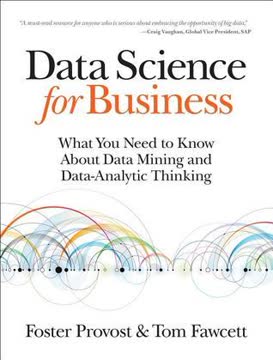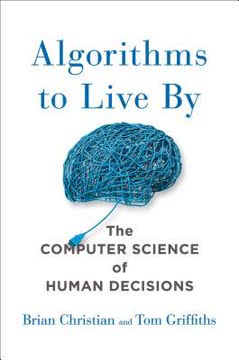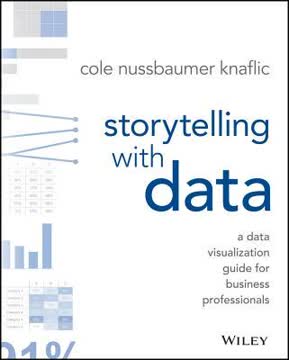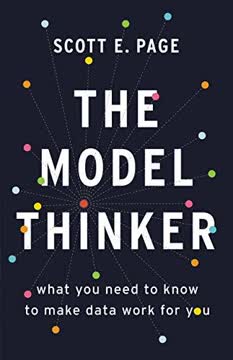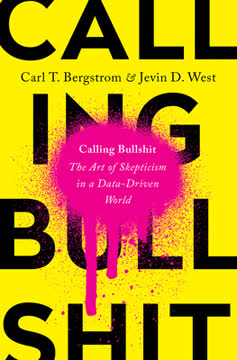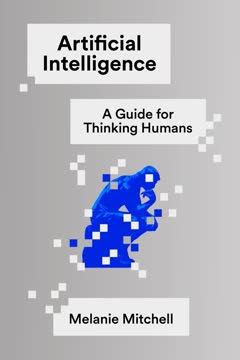가지 주요 요점
1. 통계학: 데이터로부터 배우는 예술
숫자는 스스로 말할 수 없다. 우리가 그들을 대신해 말한다. 우리는 그들에게 의미를 부여한다.
데이터 기반 통찰. 통계학은 데이터를 통해 세상을 이해하고 더 나은 결정을 내리는 과학이다. 이는 데이터를 수집하고 분석하며 해석하여 의미 있는 결론을 도출하는 것을 포함한다. 이 분야는 수학적 엄밀성과 실용적인 문제 해결을 결합하여 복잡한 정보에서 가치 있는 통찰을 추출할 수 있게 한다.
PPDAC 사이클. 통계학의 기본적인 프레임워크는 PPDAC 사이클이다:
- 문제: 해결할 질문이나 문제 정의
- 계획: 연구나 실험 설계
- 데이터: 관련 정보 수집 및 정리
- 분석: 통계 기법을 적용하여 패턴 발견
- 결론: 결과 해석 및 소통
이 체계적인 접근 방식은 통계 조사가 잘 구조화되고 실제 문제 해결에 집중할 수 있도록 보장한다.
2. 세상을 데이터로 변환하기: 도전과 기회
우리의 가장 개인적인 감정조차도 코드화되어 통계 분석의 대상이 될 수 있다.
데이터 표현. 현실 세계의 현상을 데이터로 변환하는 것은 통계 분석에서 중요한 단계이다. 이 과정은 복잡한 현실을 나타내기 위해 명확한 범주, 측정치, 변수 등을 정의하는 것을 포함한다. 그러나 이 변환 과정은 도전적이고 때로는 논란이 될 수 있다.
데이터 수집의 도전 과제:
- 정확한 범주 정의 (예: "나무"의 정의는?)
- 시간에 따른 일관된 측정 보장
- 세부 사항과 실용성의 균형
- 문화적 및 맥락적 요소 고려
이러한 도전 과제에도 불구하고, 우리의 세계의 다양한 측면을 정량화하고 분석할 수 있는 능력은 경제학, 건강, 사회 과학 등 여러 분야에서 중요한 발전을 이끌어냈다. 중요한 것은 데이터 표현에 내재된 한계와 가정을 인식하는 것이다.
3. 확률: 불확실성과 변동성의 언어
확률은 정말로 어렵고 직관적이지 않은 개념이다.
불확실성 정량화. 확률 이론은 불확실성과 변동성을 다루기 위한 수학적 프레임워크를 제공한다. 이는 예측을 하고, 위험을 평가하며, 제한된 데이터로부터 추론을 도출할 수 있게 한다. 확률을 이해하는 것은 통계 결과를 해석하고 정보에 입각한 결정을 내리는 데 필수적이다.
주요 확률 개념:
- 랜덤 변수와 분포
- 기대값과 분산
- 조건부 확률
- 대수의 법칙
- 중심 극한 정리
확률은 직관적이지 않을 수 있지만, 빈도수 나무와 시각적 표현과 같은 도구는 복잡한 개념을 더 쉽게 이해할 수 있게 도와준다. 확률을 마스터하는 것은 고급 통계 기법과 데이터 기반 주장에 대한 비판적 평가에 필수적이다.
4. 상관관계, 인과관계, 그리고 무작위 실험의 힘
상관관계는 인과관계를 의미하지 않는다.
연관성을 넘어서. 데이터에서 상관관계를 찾는 것은 쉽지만, 인과관계를 확립하는 것은 훨씬 더 어렵다. 관찰 연구는 연관성을 드러낼 수 있지만, 종종 다른 요인들에 의해 혼란스러울 수 있다. 무작위 대조 실험(RCT)은 인과관계를 결정하는 데 있어 금본위제이다.
RCT의 강점:
- 무작위 할당으로 편향 감소
- 대조군이 플라시보 효과를 고려
- 블라인딩으로 관찰자 편향 최소화
- 사전 등록으로 p-해킹 방지
그러나 RCT는 항상 실현 가능하거나 윤리적이지 않을 수 있다. 이러한 경우, 신중한 연구 설계, 혼란 변수 통제, 성향 점수 매칭과 같은 통계 기법을 사용하여 관찰 데이터에서 인과 추론을 강화할 수 있다.
5. 통계 모델: 복잡한 현실을 단순화하기
모든 모델은 틀렸지만, 일부는 유용하다.
모델 기반 사고. 통계 모델은 현실을 단순화한 표현으로, 패턴을 이해하고 예측을 돕는다. 이는 단순한 선형 회귀에서 복잡한 기계 학습 알고리즘에 이르기까지 다양하다. 모든 모델에는 한계가 있지만, 적절히 사용하면 가치 있는 통찰을 제공할 수 있다.
통계 모델링의 주요 측면:
- 관련 변수 선택
- 변수 간 관계 명시
- 데이터로부터 매개변수 추정
- 모델 적합도 및 진단 평가
- 한계와 가정 이해
모델은 이해를 위한 도구이지, 현실의 완벽한 표현이 아님을 기억하는 것이 중요하다. 목표는 특정 목적에 유용한 모델을 찾는 것이며, 그 한계를 인식하는 것이다.
6. P-값의 위험성과 재현성 위기
과학적 결론과 비즈니스 또는 정책 결정은 특정 임계값을 통과하는 P-값에만 기반해서는 안 된다.
통계적 유의성을 넘어서. P-값은 오랫동안 통계적 유의성의 척도로 사용되어 왔으며, p < 0.05는 종종 "발견"의 임계값으로 간주된다. 그러나 이 접근 방식은 출판 편향과 재현성 위기 등 과학 연구에서 수많은 문제를 초래했다.
P-값의 문제점:
- 의미의 오해
- 유의성의 임의적 임계값
- p-해킹 장려
- 효과 크기와 실질적 유의성 무시
이 문제를 해결하기 위해 많은 통계학자들은 효과 크기와 신뢰 구간 보고, 베이즈 방법 사용, 단일 연구보다는 결과의 복제에 중점을 두는 등 더 세밀한 접근 방식을 권장한다.
7. 베이즈 사고: 경험으로부터 배우기
베이즈의 유산은 데이터가 스스로 말하지 않는다는 근본적인 통찰이다 – 우리의 외부 지식과 판단이 중심적인 역할을 한다.
신념 갱신. 베이즈 통계는 새로운 증거를 수집하면서 우리의 신념을 갱신하는 프레임워크를 제공한다. 이는 사전 지식과 관찰된 데이터를 결합하여 사후 확률을 형성한다. 이 접근 방식은 제한된 데이터 상황이나 전문가 지식을 통합할 때 특히 유용하다.
주요 베이즈 개념:
- 사전 및 사후 분포
- 우도와 베이즈 정리
- 신뢰 구간
- 베이즈 인자를 사용한 모델 비교
베이즈 방법은 불확실성에 대한 더 직관적인 접근 방식을 제공하며, 질병의 사전 확률이 잘 알려진 의료 진단과 같은 분야에서 특히 유용할 수 있다. 그러나 이는 사전 분포의 신중한 고려가 필요하며 계산적으로 집약적일 수 있다.
8. 데이터 윤리와 현대 세계에서의 책임 있는 통계
소셜 미디어 계정에서 수집된 개인 데이터의 잠재적 오용에 대한 우려가 증가하면서 데이터 과학과 통계의 윤리적 측면에 대한 관심이 집중되고 있다.
윤리적 고려사항. 데이터가 다양한 분야에서 의사 결정의 중심이 되면서, 통계학자와 데이터 과학자는 윤리적 고려사항과 씨름해야 한다. 여기에는 프라이버시, 공정성, 투명성, 통계 결과의 오용 가능성 등의 문제가 포함된다.
주요 윤리적 도전 과제:
- 빅 데이터 분석에서 개인 프라이버시 보호
- 알고리즘 의사 결정의 공정성 보장
- 분석의 불확실성과 한계 소통
- 데이터 수집 및 분석에서의 편향 문제 해결
- 데이터 기반 통찰의 이익과 잠재적 해악의 균형
책임 있는 통계 실천은 기술적 전문성뿐만 아니라 윤리적 원칙에 대한 헌신과 우리의 작업이 사회에 미치는 광범위한 영향을 인식하는 것을 포함한다. 이 분야가 발전함에 따라, 통계 교육과 전문 실천에 윤리를 통합하는 것이 점점 더 중요해지고 있다.
마지막 업데이트 날짜:
FAQ
What's The Art of Statistics: Learning from Data about?
- Focus on Statistical Science: The book emphasizes the role of statistical science in understanding the world and making informed decisions based on data.
- Real-World Applications: It uses examples like Harold Shipman and child heart surgery to show how statistics can uncover truths and inform public health.
- Problem-Solving Framework: Introduces the PPDAC cycle (Problem, Plan, Data, Analysis, Conclusion) as a structured approach to statistical inquiry.
Why should I read The Art of Statistics?
- Enhance Data Literacy: It improves your ability to critically assess statistical claims and understand data implications in everyday life.
- Accessible to All: Designed for both students and general readers, it makes complex statistical concepts approachable without advanced math skills.
- Empower Decision-Making: Understanding statistical principles equips you to make informed decisions in personal and professional contexts.
What are the key takeaways of The Art of Statistics?
- Understanding Uncertainty: Emphasizes that all statistical estimates come with uncertainty, crucial for data interpretation.
- Importance of Context: Highlights how context influences data interpretation and perceptions of risk and outcomes.
- Causation vs. Correlation: Stresses the distinction between correlation and causation, a fundamental principle in statistics.
What are the best quotes from The Art of Statistics and what do they mean?
- "The numbers have no way of speaking for themselves. We speak for them.": Highlights the need for interpretation and context in deriving meaning from data.
- "All models are wrong, but some are useful.": Acknowledges the limitations of statistical models while recognizing their utility in predictions.
- "Correlation does not imply causation.": Reminds that correlation between variables does not mean one causes the other.
How does the PPDAC cycle work in The Art of Statistics?
- Structured Approach: PPDAC stands for Problem, Plan, Data, Analysis, and Conclusion, providing a systematic framework for statistical inquiries.
- Iterative Process: Each stage informs the next, allowing for continuous refinement based on findings.
- Real-World Examples: Illustrated with case studies, demonstrating its application in real-world analysis.
How does The Art of Statistics explain the difference between correlation and causation?
- Key Distinction: Emphasizes that correlation does not imply causation; other factors may influence the relationship.
- Examples Provided: Uses examples like ice cream sales and drowning rates to illustrate common misconceptions.
- Critical Thinking: Encourages critical thinking about variable relationships and seeking evidence of causation.
What is a confidence interval, as defined in The Art of Statistics?
- Definition: An estimated range within which an unknown parameter likely lies, based on observed data.
- Calculation: Typically calculated as the estimate ± a margin of error, reflecting the uncertainty of the estimate.
- Interpretation: Expresses the precision of an estimate, helping understand data reliability and variability.
What is the significance of the distinction between sample statistics and population parameters in The Art of Statistics?
- Understanding Estimates: Sample statistics estimate population parameters, crucial for accurate data interpretation.
- Uncertainty in Estimates: Discusses how sample statistics come with uncertainty, quantified using methods like bootstrapping.
- Implications for Inference: Highlights the importance of sample size and representativeness for making inferences about a population.
How does The Art of Statistics address the concept of causation?
- Causation vs. Correlation: Emphasizes careful analysis to establish causal relationships, not just correlations.
- Bradford Hill Criteria: Introduces criteria for assessing causation in observational studies, considering factors like strength and consistency.
- Importance of Randomized Trials: Advocates for randomized controlled trials as the gold standard for establishing causation.
What role does probability play in The Art of Statistics?
- Foundation for Inference: Provides the mathematical foundation for statistical inference, quantifying uncertainty and making predictions.
- Different Interpretations: Discusses classical, frequentist, and subjective approaches, highlighting their relevance in different contexts.
- Real-World Applications: Applied to scenarios like estimating unemployment rates, reinforcing its practical importance.
How does The Art of Statistics explain the concept of bootstrapping?
- Resampling Technique: Described as a method of repeatedly sampling from a dataset with replacement to estimate variability.
- Confidence Intervals: Used to create confidence intervals, enhancing understanding of uncertainty in sample statistics.
- No Strong Assumptions: Does not require strong assumptions about population distribution, making it a flexible tool.
What are some common pitfalls in statistical practice highlighted in The Art of Statistics?
- Questionable Research Practices: Discusses issues like selective reporting and P-hacking, leading to misleading conclusions.
- Publication Bias: Highlights the problem of publication bias, skewing scientific literature and misleading future research.
- Misinterpretation of Results: Warns against confusing correlation with causation or overgeneralizing from small samples.
리뷰
통계의 예술은 무거운 수학 없이 통계 개념을 설명하는 매력적인 접근 방식으로 찬사를 받고 있다. 독자들은 현실 세계의 예시와 복잡한 주제에 대한 명확한 설명을 높이 평가한다. 많은 이들이 미디어와 연구에서 통계를 해석하는 방법을 이해하는 데 유용하다고 생각한다. 일부는 책의 일부가 너무 기초적이고 다른 부분은 너무 복잡하다고 비판한다. 전반적으로 통계적 문해력을 향상시키고자 하는 사람들에게 추천되지만, 완전 초보자에게는 접근성이 다소 떨어진다는 의견도 있다.
Pelican Books Series Series
Similar Books
